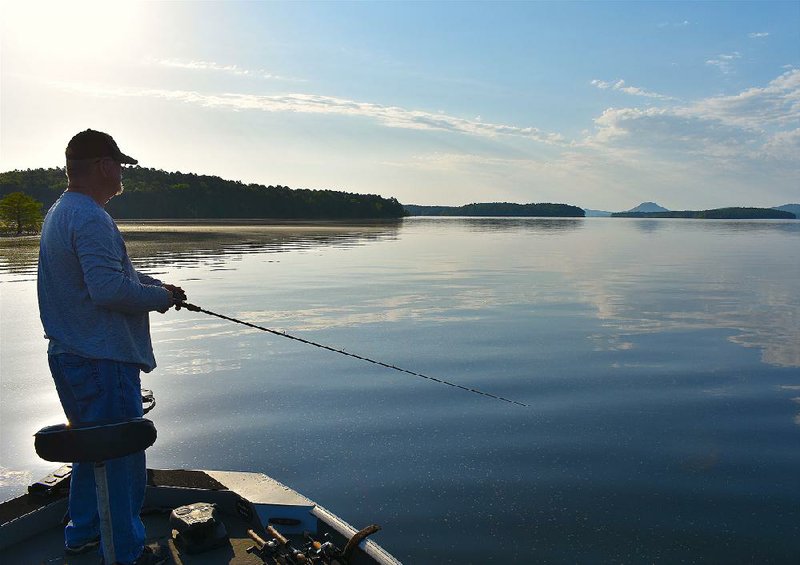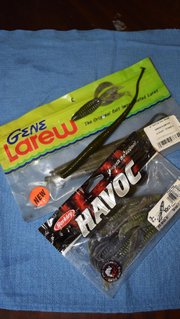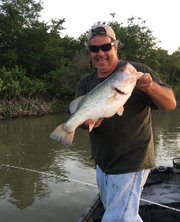CABOT -- I wish I had switched knots sooner.
Since the 1990s, my do-everything knot has been a versatile fastener that I call the Leo Coffman knot. The late "Daddy Leo" used it primarily as a spinnerbait knot, and it shines in any role that doesn't require a hard, sharp hookset.
It tends to fail under severe initial load, especially when initially loaded against a big fish. That flaw is not apparent against smallmouth bass in streams or in situations, like trolling, where fish generally hook themselves.
It was painfully apparent over the past two weeks, however, when I used high-pressure tactics against bigger than average bass.
The first demonstration occurred a couple of weeks ago on a private reservoir near Pine Bluff while fishing with Ray Tucker, host of Ray Tucker's Arkansas Outdoors radio program that airs Wednesdays from 7-8 p.m. On 103.7-FM, The Buzz. Bites were scarce that day, but the few I got were good, and I lost them all on the hookset.
The second demonstration occurred Monday at Lake Maumelle while fishing with Mike Romine of Mabelvale. Romine used a 1/4-ounce spinnerbait to catch and release about a dozen largemouth and Kentucky bass. I used floating frogs and soft plastic jerkbaits over thick vegetation. I got half a dozen strikes from really solid bass, and again, I broke them all off on the hookset.
I frequently use a variant of the uni knot that Bill AuCoin taught me while saltwater fishing in St. Petersburg, Fla. I call it the Mirr-O-Lure knot. It's a loop knot that puts no pressure on the eyelet. The loop might break, but the knot never fails. The improved clinch knot is also a strong option.
The third demonstration and turning point occurred Thursday while fishing again with Tucker on a private reservoir near Cabot. It is a big rectangle of highly stained water that looks featureless on the surface, but the bottom is a vast tangle of brush and logs.
The landowner met us after he got off work to open the gate.
"It's simple fishing," he said. "All you need is a plastic worm or a [Reaction Innovations] Sweet Beaver. Just pick a bank."
Time was that you could scarcely make a cast without getting a bite, the landowner said.
"There aren't nearly as many fish here anymore, but the quality is a lot better," he said. "The lake record is 8.6 pounds."
Tucker and I made our first casts about 5 p.m. The sun was glaring and very hot, with a mere breath of a breeze.
Using the improved clinch knot, I tied on a Berkley Havoc Pit Boss, which is similar to a Sweet Beaver, and cast to the edge of a small grass mat. I felt a hard thump and whipped my hips around to set the hook. The rod loaded and then went weightless. The knot failed.
It happened again shortly after Tucker caught the day's first bass.
The Mirr-O-Lure knot was all I had left to smooth my tattered nerves.
My primary stick was a 6-foot, 6-inch Falcon Lowrider medium-heavy spinning rod with a WaveSpin 5000 spinning reel and Spiderwire Ultra Cast braid. I attached a hook with the Mirr-O-Lure knot and completed the kit with an 8-inch Gene Larew green pumpkin Tattle Tail worm.
Tucker asked about using a buzzbait.
"The solunar tables in the paper list a major activity period at about 8 p.m.," I added. "That means fish should be active about 90 minutes either side of 8. When the sun gets off the water, bass will leave cover and jump all over that buzzbait."
"Do those tables really mean anything?" Tucker asked.
"I swear by them," I replied.
It didn't take long for a fish to take the Gene Larew worm, and this time the knot held against a bass that we estimated to weigh about 3 pounds.
"I'll bet they bite when we get to that far bank in the shade," Tucker said.
That bank had more cover, and I got another bite next to a grass tuft. I set the hook hard and the knot held against a bass that weighed about 4 pounds.
We reached the end of that bank and turned around to fish it going the other direction. I cast to a gap between two fallen logs. The line shuddered and then swept into open water. I set the hook hard again and landed a 5-pounder.
My trolling motor quit midway down the bank where we started. Tucker howled with laughter as I cast while sculling the heavy War Eagle.
"This is how we started, B, but I'll bet most people fishing these days don't even know what sculling is!"
Tucker finally couldn't take it anymore.
"Hand me that paddle," he ordered. "I'll row while you fish."
"Give me your buzzbait," I replied.
"You catch a bass with my buzzbait, and I'll whack you across the back of the head with this paddle!"
About five casts later, a geyser erupted as a bass slammed the buzzbait. I whooped and hollered as I fought and boated the day's fifth and final fish, a near 6-pounder.
Near the truck was a large, white pipe with an upturned opening. At a range of about 30 yards, Tucker said, "A hundred dollars if you can throw it in that pipe."
Without hesitation I launched the buzzbait. Its blade hummed in flight, and then it disappeared into the pipe with an echoing rattle.
Tucker laughed so hard he nearly fell out the back of the boat.
"You hit for the cycle, B!" he yelled. A 3, 4, 5 and 6! And a walk-off, called shot in the pipe!"
All made possible by a good knot.
Sports on 05/13/2018


